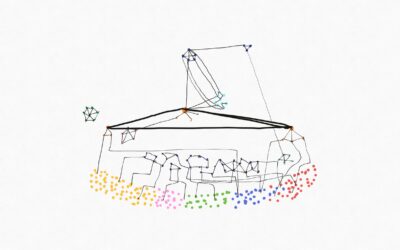India is a land of paradoxes where students of IITs learn Artificial Intelligence whereas children in tribal areas lack access to basic elementary education. When the upper-middle-class children attend webinars, the children of below poverty line families engage in child labor. It’s ironic that when the children of urban areas do science projects in computer labs, there are schools in rural areas without a library. We have seen the schools in cities where parents are interviewed for admission of their children in kindergarten, and at the same time there are parents in tribal areas who send their children to government schools just because of the provision of mid-day meals.
Now, in the time of the Corona pandemic, education is being affected like never before. The continuity in education has now become a matter of haves and have nots. Children who have access to electricity, television, computers, laptops, tablets and smartphones will have access to education as well.
Technology is a game-changer in education. It’s evolving on a daily basis. The opportunity it has to offer in education is enormous. It can change the future for students. The learning styles of each student is different and hence, technology offers diversity in learning. It also saves trees. Why do we need paper when we can have e-paper and online presentations.
Who would have thought of studying at and getting a degree from Ivy League colleges without actually going to them. Online education has opened a wide range of possibilities for the current generation. The webinars and video conferences have actually brought all the talented minds to interact on a single platform. The reach of social media has led to easier access of education and the app-based interactive learning platforms have opened up a wide spectrum of options.
Nowadays the 3D printers are used in schools to give the children a different dimension of learning by doing. Virtual reality and augmented reality extrapolate the learning to a different level where the user or learner actually experiences in real-time. Technology based education enables the user to become the jack of all trades but it comes with certain bottlenecks.

Children learning and observing 3d printing
1. Electricity
There are villages in India yet to get power supply, and hence, there are schools in rural and tribal areas with no electricity. When electrification happens, a wide range of possibilities emerge. The government should ensure that the areas which are still not connected with power grids, can be at least equipped with solar-panels for increased access to education among other things.
2. Access To Internet
There are only a little above 4.5 lakh cell towers in India which in turn leave out large sections with no internet connectivity. As per the Digital 2020 India report, about half of the Indian population has no access to internet even today. This penetration stands at 50%, with a majority of internet users in the age group of 20-29 and a big chunk of them accessing the internet with their mobile phones.

Classroom in recently reopened school in Konta
3. Medium To Access Technology
This would include devices like computers, laptops, tablets, and smart phones. These days, many users are learning and accessing education on smartphones as it is pocket-friendly, personalised as well as user centric. But there are challenges that need to be addressed. The smartphone penetration in India is around 53% with the highest in Kerala at 65%. Gujarat, Maharashtra, Delhi, Himachal Pradesh, and Tamil Nadu are also above the mark of 50% while Bihar, Chhattisgarh, and Assam stand at the bottom with 30%, 29%, and 27% respectively.

Primary school in Konta (Chhattishgarh)
If these three bottlenecks are addressed, then technology has huge potential to embark changes in the education of children across India. Textbooks can be replaced by e-books and can be read on smartphones. These can be maintained without taking up any space and without worrying about its wear and tear. Tech-based platforms have more interactive spaces and thereby, students and teachers can engage in multiple ways of learning. There will be a host of personalised learning opportunities. The use of Artificial Intelligence (AI) can create customised learning platforms according to students’ interests and learning levels.
The customisation of lesson plans and the pace of learning can also be adjusted in tech-based education programs like we currently have on edX and Coursera where you can take courses according to your pace and availability of time. The possibility of peer learning and inquiry-based learning goes up. The instructional tools like interactive whiteboards can also aid the facilitator to enable a better learning experience for children. Online quizzes and mock question papers on websites and dedicated apps for preparing the children for examinations also give a friendly approach to education. Its results can also be seen on a real-time basis.
When technology-based education is available and accessible, steps should be taken by the government to also ensure that it is affordable. Otherwise, all the efforts will be futile in the long run. The marginal groups should also be able to afford the technology. Inclusion of such communities in advancements through technology where they are receiving uninterrupted quality education should be the priority in the years to come.







Well written!